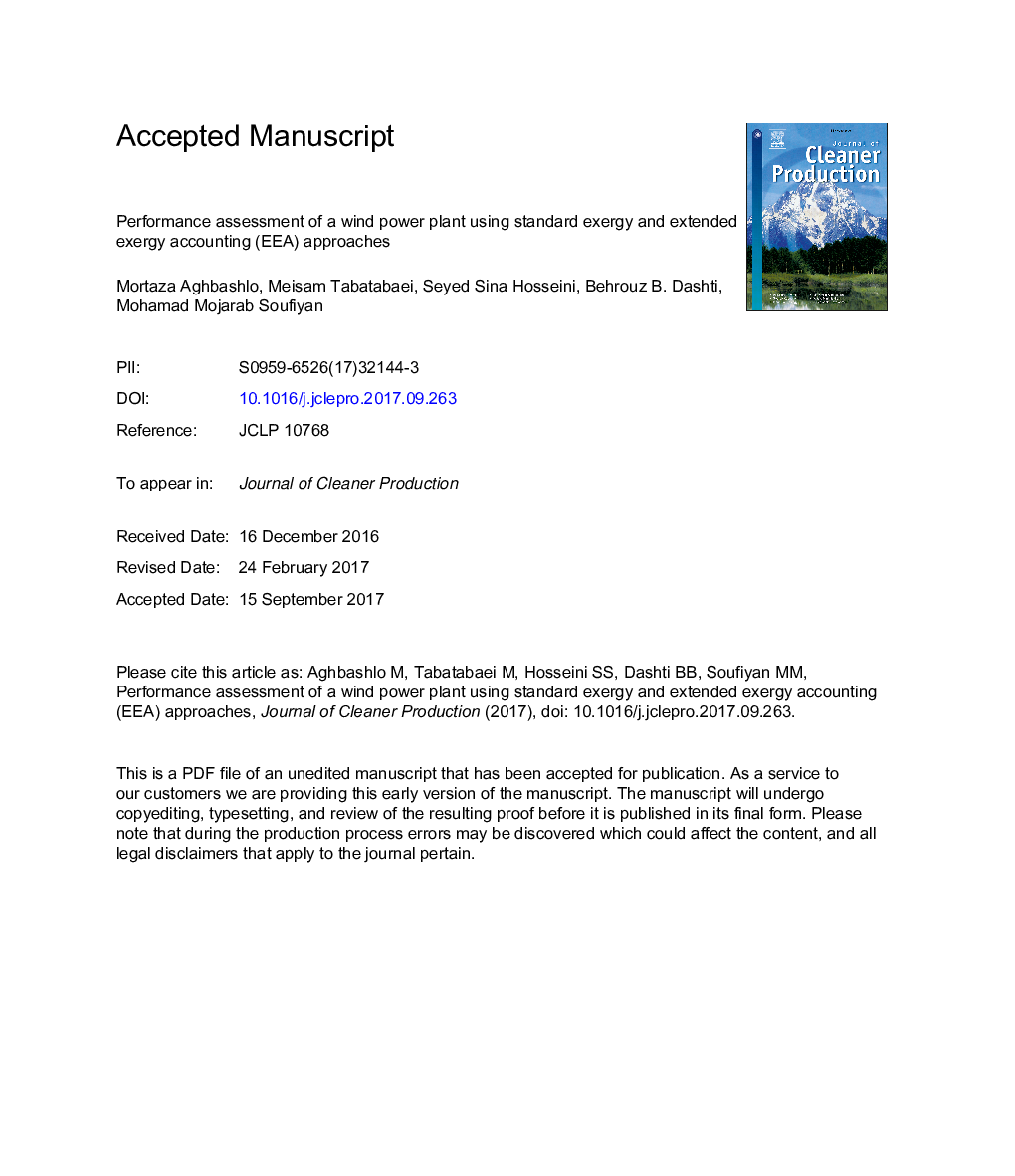| Article ID | Journal | Published Year | Pages | File Type |
|---|---|---|---|---|
| 5479153 | Journal of Cleaner Production | 2018 | 40 Pages |
Abstract
In this study, standard exergy and extended exergy accounting (EEA) approaches were applied and compared to evaluate the performance of a wind power plant located in the northern region of Iran. The efficiency of the whole wind plant was found to be 63.82% and 15.76% on the basis of the standard exergy and EEA approaches, respectively. This low exergetic efficiency obtained using the EEA concept was mainly due to the inclusion of non-energetic/immaterial terms, particularly the capital influx in the exergetic computations. The exergy destruction (irreversibility) on the basis of the standard exergy theory was remarkably lower than the EEA-based irreversibility due to overlooking the externalities in the standard approach. Overall and based on the findings of the present study, the EEA theory was found to be much more accurate to measure the sustainability and productivity of wind-driven power plants compared with the standard exergy analysis. The EEA-based thermodynamic framework concept developed herein could be employed for decision making on the implementation of renewable energy plants under different climate conditions such as wind-driven power plants with respect to their sustainability and productivity aspects.
Related Topics
Physical Sciences and Engineering
Energy
Renewable Energy, Sustainability and the Environment
Authors
Mortaza Aghbashlo, Meisam Tabatabaei, Seyed Sina Hosseini, Behrouz B. Dashti, Mohamad Mojarab Soufiyan,
